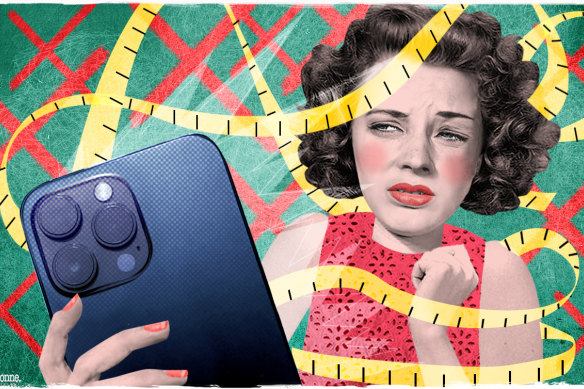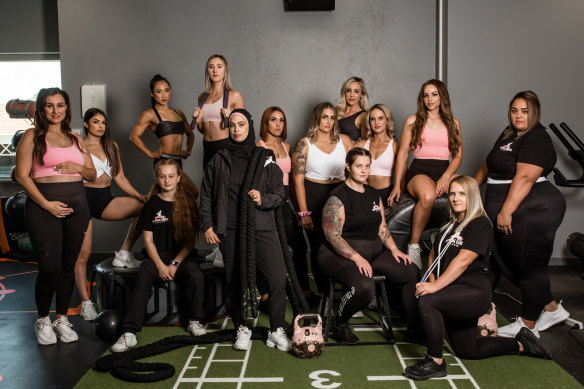nitroglycerin medical side effects
Save articles for later
Add articles to your saved list and come back to them any time.
If you’re looking to improve your health these days, chances are you’ll find yourself on Instagram at some point, scrolling through endless posts about “what I eat in a day”, “the best exercises for a toned tummy”, institute of medicine integrative medicine and before and after photos proclaiming the effectiveness of a certain regimen. But just how reliable is the information they circulate? And just how healthy are the lifestyles they’re promoting?
A new study from the University of South Australia set out to answer these questions. Surveying 100 of Instagram’s top fitness influencers from around the world, it found that two-thirds promoted “dubious” fitness information, while about a quarter posted images that were hyper-sexualised or contained objectification or nudity.
Two-thirds of Instagram’s top 100 fitness influencers promote “dubious” information according to a new study.Credit: Dionne Gain
Twenty-year-old Molli Johns came of age at a time when social media like Instagram and Snapchat were starting to become incredibly popular. The Melbourne-based dancer struggled with an eating disorder from her early teens, and was formally diagnosed with an eating disorder known as Otherwise Specified Feeding or Eating Disorder, when she was 17.
She says that her relationship with social media contributed to her eating disorder. “As a young 13-year-old, seeing a lot of this [fitness and health] information made me feel like I had to be doing what they did – doing this new diet, going to the gym, doing exactly what they did to fit a certain image. That was what society said you had to look like.”
She adds she never scrutinised the information about health and fitness being promoted. “I was young and naive, and thought that whatever it said was right.” The findings from a University of Sydney study released last month suggest that women are just as likely to accept health messages promoted by influencers as those from health professionals.
For the University of South Australia’s study, researchers developed an audit tool that was used to assess the 15 most recent posts on each fitness influencer’s account. (The study did not disclose the specific accounts). Screening criteria included the number of fitness-related posts, nudity or inappropriate clothing, sexualisation or objectification, and portraying “extreme” or unrealistic body types.
Dr Rachel Curtis, the study’s lead researcher, says that these criteria were determined by “specific types of images that research has found can have a negative effect on mental health.” A 2022 article, for example, found that women who frequently viewed “fitspiration” and clean eating content on social media were more likely to engage in thin-idealisation and disordered eating.
Curtis is hopeful the audit tool, which is freely available with the paper, will be beneficial to individuals and organisations. She suggests that it may also be useful for influencers, who could use it to be more cognisant of what they’re posting.
Associate Professor at Flinders University Ivanka Prichard, one of the study’s co-authors, says its findings “raise concerns” that many accounts claiming to promote health and fitness post images that are “objectified and sexualised in nature” and unrelated to fitness.
She explains that a culture of thinness in the media has affected the types of images we see in the health and wellness space. “We’ve internalised this thin ideal and equate thinness with health.”
“But we know that all types of body shapes can be healthy,” she continues. “It’s more about the behaviour of what we do rather than how we look, like engaging in healthy levels of exercise and having a healthy diet.”
Prichard adds that finding a high proportion of sexualised images is also concerning. “When women self-objectify they come to value themselves for their appearance. People see this and might think it is normative and that they need to be posting [this type of content] to get likes or followers.”
Lauren Calvin, founder of the National Women’s Fitness Academy, is trying to expand this narrow thinking around what a healthy body looks like in the fitness industry. She started the academy after struggling to find a coach who understood pregnancy fitness.
“The lack of body diversity in fitness media made me feel like I had to look a certain way to be taken seriously which fuelled my eating disorder, and the lack of support I could find during pregnancy and postpartum made me realise there was a huge hole in the education provided to personal trainers about women.”
The National Women’s Fitness Academy.
Calvin, who suffered from bulimia as a child, says this developed into another eating disorder when she discovered the online fitness world in her teens. “I discovered clean eating and fitness, which gave me a sense of control. I switched that eating disorder for another one – orthorexia, an obsession with clean eating.”
The academy’s social media promotes body diversity, as well as sharing information about everything from lifting weights while pregnant to training during Ramadan.
“It’s all toned, tanned young, perfect bodies. Ads for PT courses were usually a young fit male coaching a fit woman. It really annoyed me. I felt like I had to look a certain way to be considered knowledgeable.”
“People will say we are promoting obesity, but that is not the case at all. Overweight people deserve to feel safe and comfortable at the gym, not judged and discriminated against,” says Calvin.
Graduates of the academy receive their Certificate III and IV in Fitness, but are also “educated in body image, disordered eating, pregnancy and postpartum, the menstrual cycle, hormonal conditions like PCOS [polycystic ovarian syndrome] and endometriosis, gut health, menopause and business.”
So what can Instagram users do to protect themselves against potentially harmful content?
Associate professor Gemma Sharp is head of the Body Image and Eating Disorders Research Group at Monash University and Senior Clinical Psychologist at Alfred Health. She says the “concept [of the audit tool] is fantastic, helping people to be more savvy in how they consume this content.”
Sharp, who has written extensively about the effects of social media on body image, suggests employing a method called “protective filtering”, which is about taking control of your social media experience by unfollowing or blocking content that provokes negative feelings about one’s body.
But the Instagram algorithm, a mechanism that recommends new content to users using machine learning, can make this tricky. Instagram has always kept information about how its algorithm works closely guarded, and the behaviours and types of content it rewards are always changing. As Sharp acknowledges, “there are limitations of what the individual can do when you have the power of the algorithm at play.”
In December 2022, Australia’s eSafety Commissioner called for “greater transparency and robust risk management from social media platforms and online services around the dangers their recommender algorithms pose to users, particularly children.” While it acknowledged that there can be positive benefits to recommender algorithms, it stressed the potentially negative mental health impacts on vulnerable groups, including those struggling with body image or eating disorders.
Sharp adds that the responsibility should not be solely on the individual user. “It would be great if you had Instagram rewarding body positive fitness influencers.” Co-design, she says, with users and companies working together, would help develop an effective solution to this problem.
Butterfly National Helpline 1800 33 4673.
Make the most of your health, relationships, fitness and nutrition with our Live Well newsletter. Get it in your inbox every Monday.
Most Viewed in Lifestyle
From our partners
Source: Read Full Article


